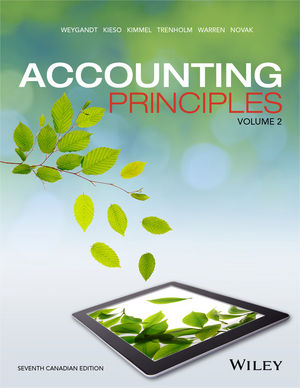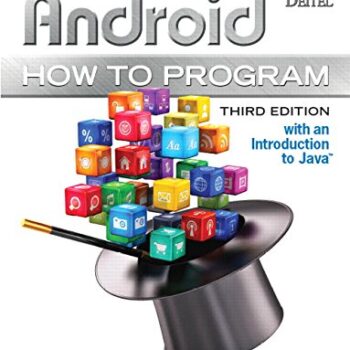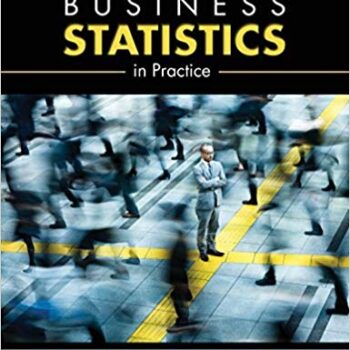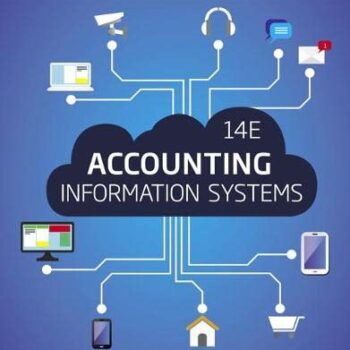
Solution Manual for Accounting Principles, Volume 2, 7th Canadian Edition by Weygandt
Original price was: $55.00.$28.00Current price is: $28.00.
Digital item No Waiting Time Instant DownloadISBN-13: 978-1119048473 ISBN-10: 1119048478
If you need to gain additional information on principles and master accounting, then the Solution Manual for Accounting Principles, Volume 2, 7th Canadian Edition: Weygandt is just what you need. If you are a student who is trying to understand difficult accounting ideas or an expert searching for an accurate manual, you will find this solution manual fit for the course.
Why Choose the Solution Manual for Accounting Principles?
The Solution Manual is meant to be used in conjunction with the main textbook. It gives comprehensive solutions and stepwise answers to the set problems and exercises provided by Accounting Principles, Volume 2, 7th Canadian Edition. These topics include the likes of financial accounting, cost accounting, and managerial accounting which will be essential for you to thrive in your studies.
Benefits of Using the Solution Manual
The Solution Manual allows you to:
- Easily explain challenging subjects like accounting for income taxes, accounting for pensions, and earnings per share.
- Obtain appropriate responses to questions that would serve in checking your work thus sharpening your skills in the process.
- Utilize the step-by-step approach to help you improve your problem-solving strategies so that you can tackle similar inquiries in examinations or other assessments more conveniently.
- Learn at your speed. The Solution Manual will also be available for consultation in whatever circumstance you meet it.
What is the role of the Solution Manual?
To effectively use the Solution Manual, here are a few steps to consider:
- Peruse the relevant sections in the other textbook.
- Attempt the exercises on your own first. This will help you better the chances of you retaining the information.
- Use the Solution Manual after the Exercise to compare with what you have done and identify where you may have erred. The explanations will wipe out any ambiguity.
- Manipulate the manual to rehearse complex problems so that by the time you reach the exam, you are confident.
Topics Covered in the Solution Manual
This Solution Manual includes controversial as well as basic accounting issues of:
- Accounting worksheets
- Cash and other capital management
- Cost drivers, and other measures, income-related
- Costing systems
- Direct inputs / Materials, labor, and other expenses and overheads
- Analytical studies on how to break even.
Every solution is provided with Brief and clear mediating statements together with a description that illustrates the idea, especially the method of reasoning used in writing replies. This manual is designed for students who are taking accounting principles intending to apply them rather than understand them.
Conclusion
To summarize, it is clear that the Solution Manual for Accounting Principles Volume 2, 7th Canadian Edition by Weygandt is essential for anyone keen on studying accounting. First, it gives you the necessary level of guidance and tools to help you preside over your coursework and the rest. Whether students are looking to enhance their performance or just broaden their understanding of accounting practice, this manual serves as a great supplement.
Solution Manual for Accounting Principles, Volume 2, 7th Canadian Edition by Weygandt
CHAPTER 11 Financial Reporting Concepts
ASSIGNMENT CLASSIFICATION TABLE
|
Learning Objectives |
Questions |
Brief Exercises |
Exercises |
Problems Set A |
Problems Set B |
|
1 |
1 |
9 |
1 |
1 |
|
2, 3, 4, 20 |
2 |
1, 10 |
1, 2, 4, 7 |
1, 2, 4, 7 |
|
5, 6, 7, 8, 9, 10, 11, 21 |
3 |
2, 3, |
1, 2, 7 |
1, 2, 7 |
|
11, 12, 13, 14, 15, 16, 17, 18, 19, |
4, 5, 6, 7, 8, 9, 10, 11 |
4, 5, 6, 7, 8, 10, 11, 12 |
1, 2, 3, 4, 5, 6, 7 |
1, 2, 3, 4, 5, 6, 7 |
|
20, 21, 22, 23, 24 |
11, 12, 13, 14 |
6, 9, 10, 11, 12 |
1, 7, 8 |
1, 7, 8 |
ASSIGNMENT CHARACTERISTICS TABLE
|
Problem Number |
Description |
Difficulty Level |
Time Allotted (min.) |
|
1A |
Identify violations of the components of the conceptual framework. |
Complex |
45-50 |
|
2A |
Identify the objective of financial reporting, identifying elements, and revenue and expense recognition – earnings approach. |
Moderate |
35-40 |
|
3A |
Identify contract components and prepare journal entries– revenue recognition contract-based approach, multiple performance obligations. |
Moderate |
20-25 |
|
4A |
Identify elements of the financial statements – contract-based approach revenue transactions. |
Moderate |
15-20 |
|
5A |
Identify revenue recognition criteria and prepare journal entries–earnings approach. |
Moderate |
20-25 |
|
6A |
Identify contract components and prepare journal entries – revenue recognition contract-based approach, right of return. |
Moderate |
25-30 |
|
7A |
Identify the concept or assumption violated and prepare entries. |
Moderate |
30-35 |
|
8A |
Explain assumptions and concepts – going concern, full disclosure. |
Moderate |
15-20 |
|
1B |
Identify violations of the components of the conceptual framework. |
Complex |
45-50 |
|
2B |
Identify the objective of financial reporting, identifying elements, and revenue and expense recognition. |
Moderate |
35-40 |
|
3B |
Identify contract components and prepare journal entries– revenue recognition contract-based approach, multiple performance obligations. |
Moderate |
20-25 |
|
4B |
Identify elements of the financial statements – contract-based approach revenue transactions. |
Moderate |
15-20 |
|
5B |
Identify revenue recognition criteria and prepare journal entries–earnings approach. |
Moderate |
20-25 |
|
6B |
Identify contract components and prepare journal entries – revenue recognition contract-based approach, right of return. |
Moderate |
25-30 |
|
7B |
Identify elements, assumptions, constraints, and measurement criteria. |
Moderate |
30-35 |
|
8B |
Comment on the application of accounting assumptions and concepts. |
Moderate |
15-20 |






